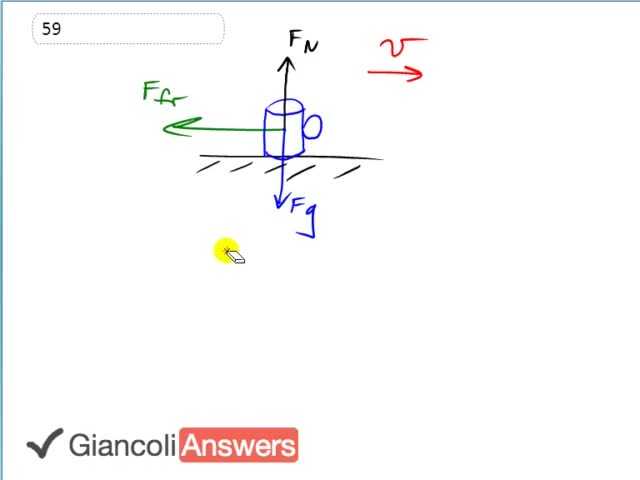

In order to watch this solution you need to have a subscription.
To find the coefficient of static friction that keeps the coffee cup from slipping on the dash we’ll need to know what the acceleration of the coffee cup is. So the acceleration is: change in velocity over change in time, so that’s the final velocity minus the initial velocity over the amount of time it takes to make that change in velocity. We’ll figure out the initial velocity by converting forty five kilometers per hour into meters per second by dividing by three point six giving us twelve point five meters per second as the initial velocity. The final velocity is zero because the coffee cup eventually stops, so zero minus twelve point five meters per second divided by three point five seconds gives us and acceleration of negative three point five seven one four meters per second squared. We’ll write down Newton’s second law according to this picture and there is only one force that is horizontal meaning we can write the force of friction as negative since it’s to the left: negative ‘Ffr’ equals ‘m’ times ‘a’, that is the net force which is just the force of friction since it’s the only one horizontally speaking. The force of friction is also the coefficient of static friction time the normal force, the normal force being equal to gravity because there's no vertical acceleration. We can replace ‘FN’ with ‘m’ times ‘g’ because that’s gravity. Substituting this means: negative ‘µs’ times ‘m’ times ‘g’ equals ‘m’ times ’a’. Solving for the coefficient of static friction: ‘µs’ equals negative ‘a’ over ‘g’. The acceleration is negative three point five seven one four, so ‘µs’ is: negative negative three point five seven one four meters per second squared divided by nine point eight meters per second squared gives us a coefficient of static friction of zero point three six. In the 5th Edition the initial speed is forty kilometers per hour which in meters per second is eleven point one meters per second, so substituting the acceleration in the 5th Edition is negative three point one seven one four meters per second squared and the coefficient of static friction is zero point three two.